Top 10 Countries with the Spiciest Food
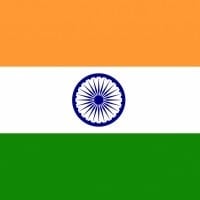 India, officially the Republic of India, is a country in South Asia. It is the seventh-largest country by area, the second-most populous country (with over 1.2 billion people), and the most populous democracy in the world. Its capital is New Delhi. Some other major cities are Mumbai, Chennai, and Ahemdabad... read more
India, officially the Republic of India, is a country in South Asia. It is the seventh-largest country by area, the second-most populous country (with over 1.2 billion people), and the most populous democracy in the world. Its capital is New Delhi. Some other major cities are Mumbai, Chennai, and Ahemdabad... read more I have always loved spicy food as well as Indian cuisine. Over the years, I have gotten to know quite a few Indians, friends and colleagues. There have been many meals with many peppers that have tempered my palate with awesome flavors. Now, the only problem is that I have to convince new Indian restaurant establishments that I want the food super spicy.
Often, they look at me, a Caucasian man, and prejudge me as having tender taste buds, giving me mild to medium spice. Normally, it takes me a visit or two to convince them.
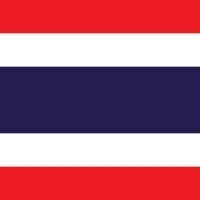 Thailand, historically known as Siam and officially the Kingdom of Thailand, is a country in Southeast Asia, located at the centre of Mainland Southeast Asia, spanning 513,120 square kilometres (198,120 sq mi), with a population of almost 70 million. The country is bordered to the north by Myanmar and... read more
Thailand, historically known as Siam and officially the Kingdom of Thailand, is a country in Southeast Asia, located at the centre of Mainland Southeast Asia, spanning 513,120 square kilometres (198,120 sq mi), with a population of almost 70 million. The country is bordered to the north by Myanmar and... read more It's about who has the spiciest food in their everyday dishes. Anyone can just toss a bunch of peppers on a dish and say they have the spiciest food, but they rarely ever eat it like that. Thais incorporate extremely spicy flavors in everyday dishes and eat them consistently.
Papaya salad is the spiciest dish I have ever had - fresh chiles are spicier than cooked. Some Thai soups are extreme, and my favorite Thai dish, pad kaprow (pork with basil and bird's eye chiles), is also quite spicy. Indian cuisine is the second spiciest. If they use bhut jolokia in any dish, don't buy it. You will die.
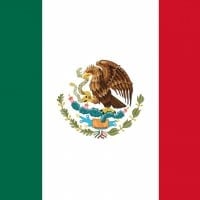 Mexico, officially the United Mexican States, is a federal republic located in North America. The country is located between the U.S. and Central America, and is known for its Pacific and Gulf of Mexico beaches and its diverse landscape of mountains, deserts, and jungles.
Mexico, officially the United Mexican States, is a federal republic located in North America. The country is located between the U.S. and Central America, and is known for its Pacific and Gulf of Mexico beaches and its diverse landscape of mountains, deserts, and jungles. Mexicans are used to having chile, or salsa, or some hot dip or something, anything that adds hotness to whatever they're eating. They even add powdered chile to their ice cream, which is nuts. No matter what they're eating, they'll want it spicy.
When they're snacking on things like crisps/chips or fruit, it's very normal to completely drown what they're eating in some hot sauce like Valentina (either the yellow or the unbearably hot black Valentina) and continue like it's no big deal.
Tabasco, habanero, chile serrano, etc., these are child's play to them. Most of my Mexican friends remain completely unfazed by things like wasabi.
 Indonesia, officially the Republic of Indonesia, is a country in Southeast Asia. Ruled by the Dutch for over 300 years and Japan for 3 years and 6 months, the country gained independence in 1945, or exactly in 17th August 1945. Jakarta is the capital city, located in the island of Java. Major languages... read more
Indonesia, officially the Republic of Indonesia, is a country in Southeast Asia. Ruled by the Dutch for over 300 years and Japan for 3 years and 6 months, the country gained independence in 1945, or exactly in 17th August 1945. Jakarta is the capital city, located in the island of Java. Major languages... read more Super ultra spicy hot chili is eaten only for challenges. Daily food is usually less spicy but always accompanied by a small bowl of spicy sambal. Indonesia has a wide variety of sambal. Their spice or hot spicy is not the type that hits you in the face, but the type which slowly creeps in your taste buds. They enjoy good addicting hot spicy food.
The only reason Indonesia isn't higher on this list is because the cuisine is not as well-known as Mexican, Thai, or Indian cuisines. But if you have been to Indonesia, you know that they love heat. I had an Indonesian shrimp curry once that was the hottest thing I've ever eaten. How hot is Indonesian food? An Indonesian would probably answer, "not hot enough!"
 China, officially the People's Republic of China, is a country in East Asia. It is the world's most populous country, with a population of more than 1.4 billion. China spans five geographical time zones and borders 14 countries, the second most of any country in the world after Russia. Covering an area... read more
China, officially the People's Republic of China, is a country in East Asia. It is the world's most populous country, with a population of more than 1.4 billion. China spans five geographical time zones and borders 14 countries, the second most of any country in the world after Russia. Covering an area... read more Try real Hunan, Sichuan, Chongqing, and Guizhou foods and then come back. I will be surprised if you find any of their dishes not spicy. Also, they drink warm water, which does not really help with the heat.
Come on, guys. Carolina Reapers? Sure, those are the hottest peppers in the world, but China has made something much spicier than that. I am Japanese-American. When I went to China with my Chinese friend, he took me to his hometown, and we saw a restaurant that sold Trinidad Scorpions, Carolina Reapers, Naga Vipers, and pretty much every super-hot pepper there is. It also made a famous spicy dish called Yu Mo Lajao. It was practically as expensive as a car, and nobody dared to try it. My friend said it was spicier than 2 Carolina Reapers. I did not believe him.
A famous Chinese guy (forgot his name) who was famous for eating super-hot peppers (including the Carolina Reaper - all he needed was 2 cups of cold milk, and he ate it, and he was back to normal in 20 seconds) walked in. Everybody in the restaurant looked at him. He bought the Yu Mo Lajao. He sat down, took 1 cup of cold milk (he thought since he dominated the Carolina Reaper then this would be a piece of cake), grabbed a fork, and took a bite of the dish. His face was red and water-covered in a few seconds, and he looked like he almost drowned in a lake. He was actually on fire! He fainted, and there was a lot of paperwork. Of course, it ruined his spicy reputation.
I went back to California in two weeks, but I will never forget the Yu Mo Lajao.
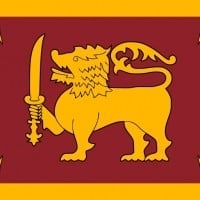 Sri Lanka, officially the Democratic Socialist Republic of Sri Lanka and known from the beginning of British colonial rule until 1972 as Ceylon, is an island country in South Asia near south-east India.
Sri Lanka, officially the Democratic Socialist Republic of Sri Lanka and known from the beginning of British colonial rule until 1972 as Ceylon, is an island country in South Asia near south-east India. I'm imagining "spicy" here means hot. There's hardly any competition if you have tried a variety of cuisines on this list. Except for some North-Eastern tribal cuisines in India, no other cuisine consistently uses such hot chilies in every dish. North Indian food doesn't even come close, although some South Indian dishes come close in terms of spiciness.
Sichuan, Hunan, and Thai cuisines do have very spicy dishes, but the majority of their food tends to be mild. The level of spiciness in Mexican and Indonesian cuisines is relative. Most people consume food with a lot of "mild" chili condiments (which they subjectively consider as "hot"). Some sambals can be fiery, but the amount added is up to the individual. The same goes for salsas.
As for the USA, you're joking, right? Just because there are a lot of hot sauces doesn't mean the food is as hot as in other countries.
 Malaysia is a Southeast Asian country occupying the Malaysian Peninsula and part of the island of Borneo. It's known for its beaches, rain forests and mix of Malay, Chinese, Indian and European influences. The sprawling capital, Kuala Lumpur, is home to colonial buildings, busy shopping districts such... read more
Malaysia is a Southeast Asian country occupying the Malaysian Peninsula and part of the island of Borneo. It's known for its beaches, rain forests and mix of Malay, Chinese, Indian and European influences. The sprawling capital, Kuala Lumpur, is home to colonial buildings, busy shopping districts such... read more Most Malaysians love spicy food, but there is a state that is so rad that they double or triple the chilies in their dishes. Some Southeast Asian countries like Malaysia, Thailand, and Indonesia have the spiciest foods thanks to bird's eye chilies, one of the spiciest chilies. This type of chili might be small, but it is more spicy compared to the red chilies used in curry dishes. People from these countries use so much of this type of chili in just a single dish.
Malaysia's food mostly has something to do with chili. They use chilies in sambals, curry, soup, main courses, and many other dishes. They also use a lot of spices in their food too, like herbs and cinnamon. Once you taste Malaysia's traditional food, you feel like you're in the real side of Asia. That's what they say, "Malaysia, Truly Asia."
 South Korea, officially the Republic of Korea (ROK), is a country in East Asia, constituting the southern part of the Korean Peninsula and sharing a land border with North Korea. Its western border is formed by the Yellow Sea, while its eastern border is defined by the Sea of Japan. South Korea claims... read more
South Korea, officially the Republic of Korea (ROK), is a country in East Asia, constituting the southern part of the Korean Peninsula and sharing a land border with North Korea. Its western border is formed by the Yellow Sea, while its eastern border is defined by the Sea of Japan. South Korea claims... read more This one should be first on the list. I find it even spicier than Indian food, especially their noodles and kimchi. I tried their Shin ramen and fire noodles, and they were unbearably spicy, to the point that I had to eat ice cream to cool down my tongue.
I once tried kimchi that made me gag. But I love their croquettes, cheese sticks, pancakes, hot dogs, and strawberry milk, basically anything less spicy and more mild.
Almost everything there is a little spicy, but usually manageable for most people. For super spicy food, there are several interesting places, such as Singil Jjamppong. This is quite challenging, even for many Koreans.
You get your picture on the wall of the restaurant if you finish the dish. There is a board that indicates the monthly count of people that fainted while or after eating the famous Jjamppong.
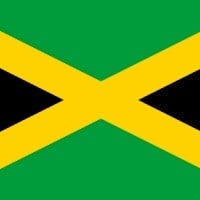 Jamaica is an island country situated in the Caribbean Sea. Spanning 10,990 square kilometres (4,240 sq mi) in area, it is the third-largest island of the Greater Antilles and the Caribbean (after Cuba and Hispaniola). Jamaica lies about 145 kilometres (90 mi) south of Cuba, and 191 kilometres (119... read more
Jamaica is an island country situated in the Caribbean Sea. Spanning 10,990 square kilometres (4,240 sq mi) in area, it is the third-largest island of the Greater Antilles and the Caribbean (after Cuba and Hispaniola). Jamaica lies about 145 kilometres (90 mi) south of Cuba, and 191 kilometres (119... read more Jamaica definitely has to be on this list! The Scotch Bonnet pepper is the second hottest pepper in the world.
Reminds me of Indian food. I love Jamaican food and had it on the East Coast.
The Scotch Bonnet peppers are everywhere!
 Bangladesh, officially the People's Republic of Bangladesh, is a country in South Asia. It is the eighth-most populous country in the world, with a population exceeding 163 million people in an area of either 148,460 square kilometres (57,320 sq mi) or 147,570 square kilometres (56,980 sq mi), making... read more
Bangladesh, officially the People's Republic of Bangladesh, is a country in South Asia. It is the eighth-most populous country in the world, with a population exceeding 163 million people in an area of either 148,460 square kilometres (57,320 sq mi) or 147,570 square kilometres (56,980 sq mi), making... read more Best food I've ever tried. Explosions of flavors within every meal. I remember eating guavas here once, but as always, people here need something to boost up the taste, so they added this special type of chili. Ever since, guava has been my favorite fruit.
The mixture of chili, garlic, ginger, cumin, and so much more creates some of the most diversified and explosive flavors in the world.
Once, I ate a fruit salad with lots of black pepper and maybe some other hot things. EDIT: Tried to eat.
 The United States of America, or the U.S.A. for short, is a federal republic composed of 50 states, 48 of them are contiguous states. There are two other states, Alaska and Hawaii, which are north and south of the contiguous states, respectively. The United States declared its independence from the... read more
The United States of America, or the U.S.A. for short, is a federal republic composed of 50 states, 48 of them are contiguous states. There are two other states, Alaska and Hawaii, which are north and south of the contiguous states, respectively. The United States declared its independence from the... read more To the people saying there are no spicy cuisines in the USA, it seems they must have only eaten at McDonald's and thought that was the extent of our food culture. We have Midwest and New England style cooking. We also boast Southern cooking and Soul Food, Cajun, and Tex-Mex cuisines, to name a few.
Down south, almost every restaurant has a bottle of Tabasco on the table. If you've never eaten Cajun Jambalaya or a bowl of Gumbo with Andouille sausage, or never had a bowl of Texas two-alarm chili, you can't say the US does not have any spicy cuisines.
In the Midwest, we love our brats with hot mustard - "Mister Mustard Hot Mustard" - that will burn your nose off, or Atomic Horseradish - Extra Hot on beef, which will blow your head off because it's so hot. We are one country with a lot of cuisines.
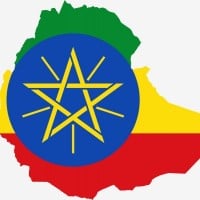 Ethiopia, officially known as the Federal Democratic Republic of Ethiopia, is a sovereign state located in the Horn of Africa.
Ethiopia, officially known as the Federal Democratic Republic of Ethiopia, is a sovereign state located in the Horn of Africa. Not many people venture into genuine Ethiopian cuisine. Those who do probably know Ethiopia serves some of the spiciest foods. You'll feel it well into the next day.
It also happens to be very delicious while catering to both meat lovers and vegetarians. Note that many Western restaurants typically water down the spices to make it more tolerable for the masses.
Whoever did this list has never had Ethiopian food before. Ethiopian food is very spicy and delicious too, even people who usually eat spicy foods claim it's too hot for them. Our food is the food of the Gods.
 Pakistan was established in 1947 and is located in South Asia. Islamabad is the capital city of Pakistan. Karachi, Lahore and Peshawar are other major cities of Pakistan. Urdu and English are official languages of Pakistan. World's second highest peak (K-2) and ninth highest peak (Nanga Parbat) are... read more
Pakistan was established in 1947 and is located in South Asia. Islamabad is the capital city of Pakistan. Karachi, Lahore and Peshawar are other major cities of Pakistan. Urdu and English are official languages of Pakistan. World's second highest peak (K-2) and ninth highest peak (Nanga Parbat) are... read more Overshadowed by India, I am eager to try Pakistani food. There is a restaurant near my house. Pakistani food is probably a mix of Indian and Middle Eastern cuisine.
I've known Pakistani families that eat food that is, on average, too spicy for me. I can handle spice just about anywhere but certain locales in India. However, I personally haven't found groups of people with such an everyday tolerance to "heat" - not among the Chinese or Koreans, and definitely not the norm in Japan. Outside these two countries, I've found chili-heads that are world class.
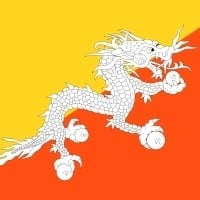 Bhutan, officially the Kingdom of Bhutan, is a landlocked country in South Asia at the eastern end of the Himalayas. It is bordered by China to the north and India to the south. Nepal and Bangladesh are located in proximity to Bhutan but do not share a land border. The country has a population of over... read more
Bhutan, officially the Kingdom of Bhutan, is a landlocked country in South Asia at the eastern end of the Himalayas. It is bordered by China to the north and India to the south. Nepal and Bangladesh are located in proximity to Bhutan but do not share a land border. The country has a population of over... read more They have a famous dish that is entirely cooked with chili and cheese - the hotter, the better for them.
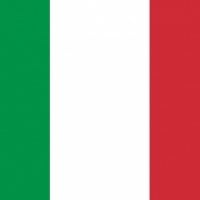 Italy (Italian: Repubblica Italiana) is a sovereign state and unitary parliamentary republic in south-central Europe.
Italy (Italian: Repubblica Italiana) is a sovereign state and unitary parliamentary republic in south-central Europe.Italy covers an area of 301,338 km². With almost 62 million inhabitants, it is the third most populous EU member state. Located in the heart of the Mediterranean Sea, Italy shares... read more
Pizza alla diavola, or the devil's pizza, is a must-try. If you ever eat it, you will understand why.
To be more specific, the Calabria region is the real Italian hub of spicy meals. It features dishes like 'nduja, soppressata, sardella, and includes tons of chili pepper in almost any dish.
 Saint Lucia is a sovereign island country in the eastern Caribbean Sea on the boundary with the Atlantic Ocean.
Saint Lucia is a sovereign island country in the eastern Caribbean Sea on the boundary with the Atlantic Ocean.
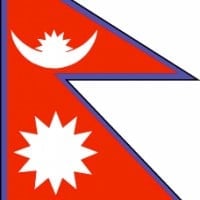 Nepal, officially the Federal Democratic Republic of Nepal, is a sovereign state located in South Asia.
Nepal, officially the Federal Democratic Republic of Nepal, is a sovereign state located in South Asia.It is home of the famous Gurkhas whose name come from a small district in Nepal called Gorkha. The name Gorkha came from the legendary Indian sage Gorakhnath who did spent later part of his... read more
I used to think Indian food is the spiciest, then I went to Nepal on a trip. Oh my God! Nepali food is extremely spicy and extremely tasty. It's the kind of spiciness that makes one sweat profusely, yet you cannot stop eating.
Nepalese food is very spicy and delicious. They even have spicy candies as snacks and include green chili in every meal, despite the dishes already containing chili.
I love spicy candies and could live on them all day.
We Nepalese don't get satisfied with our meal if it's not spicy. There are those small chilies in Nepal which are extremely spicy. I remember back in Nepal, me and my family used to eat like four of them per plate of meal. Now I'm currently in Bangkok, Thailand. I don't think Bangkok wins Nepal in its spiciness.
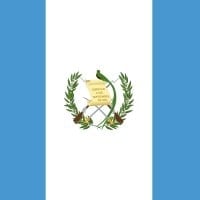 Guatemala, officially the Republic of Guatemala, is a country in Central America bordered by Mexico to the north and west, the Pacific Ocean to the southwest, Belize to the northeast, the Caribbean to the east, Honduras to the east and El Salvador to the southeast.
Guatemala, officially the Republic of Guatemala, is a country in Central America bordered by Mexico to the north and west, the Pacific Ocean to the southwest, Belize to the northeast, the Caribbean to the east, Honduras to the east and El Salvador to the southeast. The reports are unconfirmed at this point, but it appears we have a new "hottest pepper in the world." Its name is Quetzalacatenango, but in an effort to make it more marketable, it is being dubbed the Guatemalan Insanity Pepper. Rumor has it that this one is hot enough to cause hallucinations. This is what I found, but there are those who believe the pepper originally came from India.
Overshadowed by Mexico, Guatemala has spicy peppers and spicy tamales.
 Vietnam, officially the Socialist Republic of Vietnam, is the easternmost country on the Indochina Peninsula in Southeast Asia.
Vietnam, officially the Socialist Republic of Vietnam, is the easternmost country on the Indochina Peninsula in Southeast Asia. Vietnam has a lot of spicy peppers, but they are very expensive.
It can be spicy like Chinese food, but don't call Vietnamese food Chinese. They hate that.
 Nigeria, an African country on the Gulf of Guinea, has many natural landmarks and wildlife reserves. Protected areas such as Cross River National Park and Yankari National Park have waterfalls, dense rainforest, savanna, and rare primate habitats. One of the most recognizable sites is Zuma Rock, a 725m-tall... read more
Nigeria, an African country on the Gulf of Guinea, has many natural landmarks and wildlife reserves. Protected areas such as Cross River National Park and Yankari National Park have waterfalls, dense rainforest, savanna, and rare primate habitats. One of the most recognizable sites is Zuma Rock, a 725m-tall... read more Nigeria has the spiciest food in the world. No Nigerian dish is complete without pepper and spices.
Pepper is bae. If there's no pepper in the food, it's not food!
 Tunisia, officially the Tunisian Republic or the Republic of Tunisia is the northernmost country in Africa, covering 165,000 square kilometres.
Tunisia, officially the Tunisian Republic or the Republic of Tunisia is the northernmost country in Africa, covering 165,000 square kilometres.
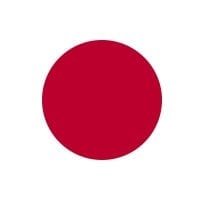 Japan is an island country in East Asia in the Pacific Ocean. It lies off the eastern coast of the Asia Mainland (east of China, Korea, Russia) and stretching from the Sea of Okhotsk in the north to the East China Sea and near Taiwan in the southwest... read more
Japan is an island country in East Asia in the Pacific Ocean. It lies off the eastern coast of the Asia Mainland (east of China, Korea, Russia) and stretching from the Sea of Okhotsk in the north to the East China Sea and near Taiwan in the southwest... read more Spicy tuna roll and Japanese curry.
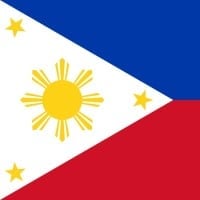 The Philippines, officially the Republic of the Philippines, is an archipelagic country in Southeast Asia. It is situated in the western Pacific Ocean and consists of around 7,641 islands that are broadly categorized under three main geographical divisions from north to south: Luzon, Visayas, and Mindanao... read more
The Philippines, officially the Republic of the Philippines, is an archipelagic country in Southeast Asia. It is situated in the western Pacific Ocean and consists of around 7,641 islands that are broadly categorized under three main geographical divisions from north to south: Luzon, Visayas, and Mindanao... read more Philippine cuisines, especially Bicol Express, is spicy. Sisig, Dynamite, and other Filipino dishes, when tasted, make the mouth say, "Ah, what is in here?" Try those dishes, and you'll definitely love the spicy blend. But of course, some Filipinos lessen the spiciness of the food so they can eat the food quite well.
There are provinces in the Philippines where people could not eat without chilies.
The Bicol Express and other soups from the Philippines can be as spicy as Thai curries.
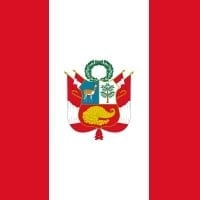 Peru, officially the Republic of Peru, is a country in western South America, bordered by Colombia and Ecuador to north, Brazil to east, Bolivia to south-east, Chile to south and the Pacific Ocean to the west. Peru is mostly known for being where the Inca people originally came from. The capital of... read more
Peru, officially the Republic of Peru, is a country in western South America, bordered by Colombia and Ecuador to north, Brazil to east, Bolivia to south-east, Chile to south and the Pacific Ocean to the west. Peru is mostly known for being where the Inca people originally came from. The capital of... read more How can Peru not be ranked higher? It is difficult to find a home without chilies as part of the daily eating regimen. Charapitas, a tiny chili from the Amazon, ranks among the spiciest.
This country should be in the top 5 for the best food in the world.
 Hungary is a sovereign state in Europe. It is situated in the Carpathian Basin and is bordered by Slovakia to the north, Romania to the east, Serbia to the south, Croatia to the southwest, Slovenia to the west, Austria to the northwest, and Ukraine to the northeast.
Hungary is a sovereign state in Europe. It is situated in the Carpathian Basin and is bordered by Slovakia to the north, Romania to the east, Serbia to the south, Croatia to the southwest, Slovenia to the west, Austria to the northwest, and Ukraine to the northeast. I'm Hungarian and really like very hot food, like many people here.
Hungarian paprika is spicy because it is made from chili peppers.